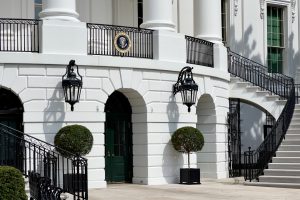CURRENT MONTH (June 2025)
Antitrust Law
U.S. Antitrust Merger Enforcement: Deputy Assistant Attorney General Delivers Speech
By Barbara Sicalides, Daniel Anziska, Joe Farside, and Julian Weiss, Troutman Pepper Locke
Deputy Assistant Attorney General (“DAAG”) Bill Rinner’s stated goal for his June 4 speech was to provide insight into how the Department of Justice, Antitrust Division will “handle merger review to ensure procedural fairness and robust enforcement.” The promised guiding principle will be that a healthy dealmaking market is important to competition and economic growth, but robust antitrust enforcement is critical to vigorous competition.
DAAG Rinner suggests that the new administration will take a different approach than the prior administration by making the point that the Antitrust Division will not view all deals as inherently suspicious and describing the Antitrust Division’s mission as “enforcement against the handful of mergers that are problematic, not civil merger deterrence generally.”
After addressing some of the overarching questions dealmakers and practitioners have about the new administration’s position on the roles of mergers and antitrust in the economy, DAAG Rinner turned to the impact that this modified pro-enforcement philosophy will have on the review process itself.
From both an economic and legal perspective, procedural predictability is critical to good government and economic dynamism. It promotes fairness and facilitates dealmaking that can benefit American companies and consumers. Procedural predictability also complements—in fact, promotes—vigorous enforcement.
The new administration is not making any changes to which transactions are reportable under the Hart-Scott-Rodino Antitrust Improvements Act of 1976 or the size of the filing fees, but it is suggesting that its process will be fair and predictable. DAAG Rinner laid out the way in which the agency expects to handle mergers and the related process:
- The Antitrust Division has a strong preference for structural remedies or divestitures, not behavioral remedies, and it will “welcome” parties’ proposals to divest to third-party buyers—fix-it-first proposals.
- Where structural remedies are more complicated and involve ongoing commercial entanglements inherent to the industry, the agency would consider use of strong monitoring and enforcement mechanisms.
- Divestiture buyers will be rigorously reviewed to ensure that they have the incentive and ability to replace lost competition in every way, including product or service quality.
- The Antitrust Division will not use its merger enforcement authority as leverage to get relief from the parties not related to the harm to competition that allegedly flows from the transaction itself.
- Second requests will only be issued where the Antitrust Division has merger-related concerns, not to build a civil or criminal conduct investigation.
- The agency will be transparent with parties about where it has concerns so that the parties can focus their advocacy on addressing those concerns.
- The Antitrust Division will not send letters to parties suggesting that an investigation is ongoing and if the parties proceed with the transaction, they will “close at their own risk.”
- The agency will seek judicial sanctions where parties systematically abuse legal privilege or withhold or alter documents required by the HSR Act.
DAAG Rinner’s remarks touch on many of the topics discussed during the prior administration and provide useful initial information for businesses, dealmakers, and legal professionals.
FTC Holds Its First Listening Session on Practices and Regulations Impacting Pharmaceutical Generic or Biosimilar Competition
By Barbara Sicalides, Melissa O’Donnell, and Devin Sengpiel, Troutman Pepper Locke
On June 30, the Department of Justice (“DOJ”) and the Federal Trade Commission (“FTC”) held the first of three listening sessions focused on ways to lower Americans’ drug prices through competition. The panels are being held as part of the Agencies’ implementation of President Trump’s Executive Order No. 14273, titled Lowering Drug Prices by Once Again Putting Americans First. That executive order instructed the Secretary of Health and Human Services to conduct “joint public listening sessions with . . . the [DOJ], the Department of Commerce, and the [FTC] and issue a report with recommendations to reduce anti-competitive behavior from pharmaceutical manufacturers.”
In this first panel discussion, titled “Anticompetitive Conduct by Pharmaceutical Companies Impeding Generic or Biosimilar Competition,” FTC Chairman Andrew N. Ferguson highlighted both that the new administration seeks to revisit previous policies and that the executive order’s mandate was wide-ranging.
The ten panelists focused on antitrust, patent and trademark office (“PTO”) reform, and legislative and regulatory action. Panelists also repeatedly referenced the role of pharmacy benefit managers (“PBMs”) in drug pricing. A more detailed discussion on that topic is scheduled for the second listening session on July 24, 2025.
Panelists briefly addressed the role of antitrust—which, unlike PTO and legislative reform, is squarely in the enforcement purview of the FTC and DOJ. Some panelists focused on reverse payment agreements and product hopping as continuing barriers to competition. For example, Markus Meier, who investigated pharmaceutical- and healthcare-related antitrust issues with the FTC before retiring in 2023, advocated for further FTC study or investigations into current patent settlement practices.
Other panelists discussed the need for rigorous merger review and litigation challenging collusion, exclusive active pharmaceutical ingredient supply agreements, and restricted distribution practices.
Panelists also debated the role of patent practices in driving high drug prices, with some arguing that excessive patenting stifles generic competition, and others defending the necessity of successor patents for innovation. The former group argued that successor patents provide incremental changes with little clinical benefit, that patent thickets delay generic entry, and that the PTO should be allowed to more rigorously examine patent applicants, granting only patents that are truly novel and nonobvious. The latter noted that pharmaceutical companies are not obtaining materially more patents than other industries.
Panelists proposed legislative reforms to streamline biosimilar approvals, particularly by eliminating the FDA’s interchangeability suffix to boost competition. Interchangeability is a label the FDA gives to biosimilars that allows pharmacists to substitute those biosimilars for the reference biologic without the prescriber’s intervention. Some panelists argued that obtaining this additional designation is burdensome and unnecessary and that the designation creates unnecessary barriers to entry. They suggested that legislative reform to the Biologics Price Competition and Innovation Act of 2009 removing this designation would encourage increased production of biosimilars. Similarly, one panelist proposed elimination of the requirement for three-way pharmacokinetics study in cases where a European-sourced reference product is used. Another advocated for a clear and narrow definition of “specialty” that would lead to less steering and greater availability of drugs and biologics that do not meet the definition.
Other panelists noted that unnecessary regulation has also imposed barriers to biosimilar adoption and reminded that the FTC sought public comment on ways to reduce anticompetitive regulatory barriers.
Subsequent panels are scheduled for July 24 and August 4, 2025.
Business Crimes & Corporate Compliance
The Treasury Two-Step: Ongoing Filing Obligations Under the CTA
By William E. H. Quick, Polsinelli PC
Visit Business Law Today’s June 2025 in Brief: Corporations, LLCs & Partnerships to read the full update on the Corporate Transparency Act.
Former CEO Sentenced in Historic Insider Trading Case Under Rule 10b5-1
By Michael R. Blumenthal, McGlinchey Stafford PLLC
On June 23, 2025, U.S. District Judge Dale S. Fischer sentenced Terren S. Peizer, former chairman and CEO of Ontrak Inc., to forty-two months in federal prison following his conviction in the first-ever criminal securities fraud case based solely on the misuse of Rule 10b5‑1 trading plans. Peizer was also ordered to pay a $5.25 million fine and forfeit approximately $12.7 million in profits obtained through illicit trading. The sentencing followed a jury verdict from June 2024 in the Central District of California, which found Peizer guilty of securities fraud under Section 10(b) of the Securities Exchange Act and Rule 10b‑5, along with two counts of insider trading.
The case centered on Peizer’s adoption of two Rule 10b5‑1 trading plans in May and August 2021. Despite internal and external warnings, Peizer initiated stock sales the day after establishing each plan—timed immediately after learning that Ontrak’s largest customer, Cigna, intended to terminate its commercial relationship. These trades allowed Peizer to avoid losses exceeding $12 million when Ontrak’s stock price dropped by over 44 percent following the public announcement of the contract termination. While Peizer’s defense emphasized that the plans were reviewed internally and disclosed, the jury concluded that he adopted them in bad faith while in possession of material nonpublic information (“MNPI”), thus invalidating any reliance on the Rule 10b5‑1 affirmative defense.
The Department of Justice underscored that this case forms part of a broader data-driven enforcement initiative aimed at identifying executive misuse of trading plans. Prosecutors relied heavily on the timing of the trades and the absence of any cooling-off period to argue that Peizer’s actions were not consistent with the good faith required under Rule 10b5‑1. The case represents a major turning point in the interpretation and enforcement of securities laws concerning insider trading and corporate governance.
This conviction marks a warning for public companies and executives that the Rule 10b5‑1 safe harbor is not absolute. Compliance programs must evolve to reflect both regulatory expectations and prosecutorial posture. Companies should now treat trading plan governance as a critical risk area, with clear protocols for plan adoption, documentation, and monitoring. The Peizer case makes it clear that mechanical compliance with plan documentation is insufficient if the underlying purpose and timing suggest an intent to trade on nonpublic information.
Key Takeaways
- First criminal conviction based solely on Rule 10b5‑1 misuse: The Peizer case is the first of its kind, establishing that improper use of Rule 10b5‑1 trading plans can lead to criminal insider trading convictions.
- Good faith is critical: The safe harbor under Rule 10b5‑1 only applies if the plan is adopted in good faith. Executives must not possess material nonpublic information at the time of plan adoption and must adhere to appropriate waiting periods before trading.
- Cooling-off periods matter: Prosecutors highlighted Peizer’s failure to observe any cooling-off period—a major factor in undermining his defense. Companies should consider adopting longer cooling-off periods to mitigate legal risk.
- Data-driven enforcement is expanding: The DOJ has confirmed that the Peizer prosecution is part of a broader initiative using data analytics to identify suspicious trading behavior and enforce insider trading laws more aggressively.
- Plan formalities alone offer no protection: Executives cannot rely solely on legal or internal compliance approvals of a 10b5‑1 plan if their trading behavior indicates awareness of MNPI or a lack of genuine intent to follow the plan in good faith.
- Compliance programs must evolve: Companies should reassess their insider trading policies, enhance oversight of 10b5‑1 plans, train insiders on legal obligations, and use monitoring tools to identify and prevent risky trading behavior.
Conclusion
To effectively utilize a Rule 10b5-1 trading plan, insiders should establish the plan when they are not in possession of material nonpublic information, implement a “cooling off” period of at least thirty days before executing any trades, ensure the plan clearly defines the parameters of price and timing of transactions, and avoid making any changes or terminating the plan while in possession of material nonpublic information. Although Rule 10b5-1 plans do not guarantee immunity from prosecution, they can serve as a strong defense when used properly.
Consumer Finance Law
Senate Parliamentarian Blocks CFPB Defunding, Allows Section 1071 Rule Delay
By Eric Mogilnicki and Cormac Dugan, Covington & Burling LLP
On June 19, the Senate Parliamentarian ruled on two provisions relating to the Consumer Financial Protection Bureau (“CFPB”) in proposed reconciliation legislation. First, the Parliamentarian found that a proposal that would eliminate all funding for the CFPB was not properly included within the reconciliation process (which requires only a majority in the Senate). Second, the Parliamentarian found that the reconciliation legislation could properly include a provision delaying the implementation of the Section 1071 rule (which imposes reporting requirements on financial institutions regarding information produced in loan applications by small businesses) by ten years. The CFPB had separately posted on June 18 an interim final rule extending compliance dates for the Section 1071 rule by one year. The Senate typically abides by the Parliamentarian’s rulings.
CFPB Issues NPRM Seeking to Limit Use of Civil Penalty Fund
By Eric Mogilnicki and Cormac Dugan, Covington & Burling LLP
On June 18, the CFPB published a Notice of Proposed Rulemaking that would limit the CFPB’s use of the Consumer Financial Civil Penalty Fund (“Civil Penalty Fund”). The Consumer Financial Protection Act allows the CFPB to use the Civil Penalty Fund “for payments to the victims of activities for which civil penalties have been imposed.” However, “[t]o the extent that such victims cannot be located or such payments are otherwise not practicable,” the Act also allows the Bureau to use such funds “for the purpose of consumer education and financial literacy programs.” The proposed rulemaking would remove references to allocating funds to consumer education from a 2013 final rule on the Civil Penalty Fund. The NPRM argues that “the 2013 rule provides neither adequate guardrails for the agency’s exercise of its discretion nor adequate transparency to the public regarding a potentially significant expenditure.”
District Court Denies Joint Motion to Vacate Townstone Settlement
By Eric Mogilnicki and Cormac Dugan, Covington & Burling LLP
On June 12, a district court denied the joint Rule 60(b) motion of the CFPB and Townstone Financial seeking vacatur of a stipulated final judgment entered in November 2024. In its order, the court reasoned that the parties failed to identify an “extraordinary circumstance” that justified vacatur of a final judgment under Rule 60(b).
CFPB Proceeds with Lawsuit Against Debt Relief Company
By Eric Mogilnicki and Cormac Dugan, Covington & Burling LLP
On June 9, the CFPB filed a motion to vacate a stay and reopen its enforcement action against debt relief services company Student Loan Pro. The action, which began in 2021, had been stayed in February at the Trump administration’s request. The motion explains that Acting Director of the CFPB Russell Vought “authorized the Bureau to proceed with this matter . . . after review to ensure that the matter is consistent with the Administration’s priority goals.” A hearing in the matter has been scheduled for July 11, 2025.
CFPB Requests Court Vacate Open Banking Rule
By Andrew Smith, Covington & Burling LLP
In a motion for summary judgment filed in the U.S. District Court for the Eastern District of Kentucky, the CFPB has asked the court to vacate its own open banking rule as arbitrary, capricious, and exceeding the agency’s authority. The Bank Policy Institute (“BPI”), Forcht Bank, and the Kentucky Bankers Association also filed a motion for summary judgment on May 30. The motion states that the CFPB overstepped its authority when it “appointed itself as the czar of opening banking in United States” and that the Bureau’s rule would be highly burdensome and would require the sharing of sensitive data with third parties, which Congress never authorized. The Financial Technology Association, a fintech advocacy group, was granted intervenor status last month, and will now attempt to defend the rule.
Powell Appoints Justice Department Watchdog to Serve as Inspector General over the CFPB
By Andrew Smith, Covington & Burling LLP
Federal Reserve Chair Jerome Powell has appointed the Justice Department’s Michael E. Horowitz as the new inspector general for the Fed and CFPB. Horowitz has served as inspector general at the Justice Department since April 2012. Horowitz replaces Mark Bialek, who retired as inspector general of the Fed and CFPB earlier this year. While the inspector general at other agencies must be appointed by the president and confirmed by the Senate, the Fed and CFPB role does not require the same process.
CFPB Directs Employees to Clear Out Offices
By Andrew Smith, Covington & Burling LLP
In an email initially sent on May 22, the CFPB instructed Bureau employees based in Washington, D.C., to collect their personal belongings from the agency’s headquarters. The email directed employees to a digital sign-up sheet, which prompted them to select a day in early June to gather their belongings. The CFPB initially claimed that any personal belongings left in the building after June 11 would be considered “disposed of,” but later relented and indicated that it would allow employees to retrieve their belongings at a later time. Most employees have been locked out of the building since February.
The CFPB’s directive precedes a pending decision from the D.C. Circuit regarding the legality of the agency’s mass layoffs. The D.C. Circuit heard oral arguments in that case on May 16, and has yet to issue a final decision on the issue.
CFPB Reaches Settlement in FirstCash Military Lending Suit
By Andrew Smith, Covington & Burling LLP
According to a status report filed on May 29, the CFPB and FirstCash Inc., a major U.S. pawnshop chain, have reached an agreement in principle to settle a Biden-era lawsuit alleging that FirstCash issued loans in violation of the Military Lending Act and a 2013 consent order. The specific terms of the new settlement agreement have not yet been made public, but the status report indicates that the parties expect to submit a final resolution of the action “in the near future.”
CFPB Rescinds Interpretive Rule on State Enforcement Authority
By Andrew Smith, Covington & Burling LLP
On May 15, the CFPB published an interpretive rule rescinding an interpretive rule it issued in May 2022, which had clarified: (1) that state attorneys general have authority to enforce any provision of federal consumer financial protection law, not just the Consumer Financial Protection Act of 2010 (“CFPA”) prohibition on unfair, deceptive, and abusive acts or practices; (2) that certain limitations that apply to the CFPB’s enforcement efforts do not apply to state enforcement activity; and (3) that attorneys general could pursue concurrent litigation alongside the CFPB. The Bureau’s May 15 interpretive rule stated that “[t]hese interpretations were improper.”
CFPB Rescinds COVID-Era Mortgage Servicing Protections, State Official Notification Rules
By Andrew Smith, Covington & Burling LLP
On May 16, the CFPB published an interim final rule rescinding temporary procedural safeguards the CFPB put in place to protect mortgage borrowers in response to the COVID-19 pandemic under the Real Estate Settlement Procedures Act. The rule is effective sixty days after its publication in the Federal Register. Then, on May 21, the CFPB issued a direct final rule rescinding its procedures for state officials to notify the Bureau when taking action to enforce the CFPA. The rule is effective sixty days after its publication in the Federal Register, unless significant adverse comments are received within thirty days of its publication.
Baltimore Voluntarily Dismisses Lawsuit Targeting Alleged CFPB Defunding
By Andrew Smith, Covington & Burling LLP
On May 29, the City of Baltimore and Economic Action Maryland dismissed their federal lawsuit against the CFPB and CFPB officials without prejudice. The lawsuit alleged that efforts by Bureau leadership to transfer the CFPB’s funds back to the Federal Reserve violated the Consumer Financial Protection Act (“CFPA”). In March, District Judge Matthew Maddox rejected plaintiffs’ request for a preliminary injunction blocking those efforts, but the case remained pending.
In explaining their voluntary dismissal, the plaintiffs cited the government’s repeated assurances that no such fund transfers had occurred or were even technically possible. They also promised to take further action in the event that CFPB leadership “later transfer[s] Bureau funds in contradiction of the[se] repeated representations.”
As Federal Oversight Recedes, New York Steps In on Buy Now, Pay Later Regulation
By Nicholas Vera, Pilgrim Christakis LLP
New York has taken a significant step in regulating the Buy Now, Pay Later (“BNPL”) industry with the enactment of its Buy-Now-Pay-Later Act on May 9, 2025. The law makes New York the first state to establish both licensing requirements and a comprehensive regulatory framework specifically tailored to BNPL products. Its passage comes at a moment of uncertainty at the federal level, as the Consumer Financial Protection Bureau (“CFPB”) has signaled a retreat from regulating these products under existing consumer credit laws.
BNPL services, offered by now-well-known companies such as Afterpay, Klarna, and Affirm, allow consumers to split purchases into multiple equal installments, often without charging interest. These loans have grown rapidly in popularity as an alternative to credit cards, particularly among younger consumers. Traditionally structured to avoid interest and limited to four or fewer payments, BNPL products have often fallen outside the scope of federal consumer lending laws, including the Truth in Lending Act (“TILA”). As a result, the BNPL sector has operated in a gray area—largely unregulated despite its widespread use.
The New York BNPL Act responds to these regulatory gaps by casting a wide net over BNPL providers operating in the state. It applies not only to lenders offering BNPL loans directly, but also to platforms that facilitate such credit, including those that rely on bank partnerships or operate BNPL marketplaces. The law defines BNPL loans broadly as closed-end credit extended to New York residents for the purchase of goods or services, with or without interest. It also establishes a two-tier approval system: providers must obtain either a license or a more limited “authorization” from the New York Department of Financial Services (“DFS”), depending on their status as financial institutions or third-party lenders.
In addition to its licensing regime, the Act imposes robust consumer protection requirements. These include caps on interest and fees, mandatory disclosure of loan terms, and a range of conduct standards modeled in part on TILA. Lenders are prohibited from charging undisclosed fees, engaging in deceptive practices, misapplying payments, or furnishing inaccurate credit information. Violating the law, such as by issuing BNPL loans without a required license, can result in the loan being declared void and uncollectible, along with potential criminal penalties. The Act will take effect 180 days after the DFS finalizes implementing regulations, a process that could take months or even years.
The Act arrives amid a retreat from federal regulators. On March 26, 2025, the CFPB indicated in a court filing that it plans to revoke a 2024 interpretive rule that treated certain BNPL providers—particularly those offering loans through digital user accounts—as “card issuers” under TILA. That rule had subjected those providers to additional disclosure and dispute resolution requirements. With the CFPB stepping back, New York is moving to fill the gap, illustrating the role states may play in shaping oversight when federal action is limited.
Environmental Law
SCOTUS Reins in NEPA Scope in Seven County
By Michael R. Blumenthal, McGlinchey Stafford PLLC
In a landmark ruling issued May 29, 2025, the U.S. Supreme Court unanimously reversed the D.C. Circuit in Seven County Infrastructure Coalition v. Eagle County, Colorado, sharply limiting the scope of environmental review under the National Environmental Policy Act (“NEPA”). This ruling represents a significant judicial recalibration, restoring deference to federal agencies and clarifying that NEPA does not require consideration of remote or indirect environmental effects beyond an agency’s jurisdiction or regulatory authority.
The case arose from the approval by the Surface Transportation Board (“STB”) approval of an eighty-eight-mile rail line in Utah designed to transport crude oil from the Uinta Basin. Environmental groups and local governments challenged the project, arguing the STB failed to analyze the environmental effects of upstream oil extraction and downstream refining. The D.C. Circuit sided with the challengers, but the Supreme Court reversed, holding that NEPA does not extend to environmental impacts too attenuated from the core agency action. Justice Kavanaugh authored the majority opinion for an 8–0 Court (Justice Gorsuch recused himself). A concurring opinion by Justice Sotomayor, joined by Justices Kagan and Jackson, agreed in judgment but emphasized that the STB’s statutory limitations made analysis of certain effects legally unnecessary.
Key Points
- Agency deference reaffirmed: The Court emphasized that agencies are owed “substantial deference” when determining the appropriate scope of NEPA analysis, so long as their decisions fall within a “zone of reasonableness.”
- Narrower causality standard: The Court held that indirect environmental impacts—such as those from increased oil drilling or refining—are not subject to NEPA review unless they have a “reasonably close causal relationship” to the proposed federal action.
- No analysis required for unregulated impacts: Because the STB lacked authority to regulate upstream drilling or downstream refining, the agency was not required to analyze those effects in its Environmental Impact Statement for the Uinta Basin Railway project.
Implications
- For project developers: This decision paves the way for a faster, more streamlined NEPA review process. Agencies may limit the scope of review to direct, causally connected effects, potentially reducing permitting delays.
- For federal agencies: Agencies now have clearer guardrails on how to scope their environmental reviews and are less vulnerable to litigation alleging failure to consider indirect or speculative impacts.
- For environmental advocates: The ruling may curtail opportunities to challenge projects based on remote consequences like induced development, carbon emissions, or market-driven behavior.
- Potential legislative impact: The decision may add momentum to congressional efforts to reform federal permitting laws, particularly as it relates to infrastructure and clean energy deployment.
Conclusion
The Seven County decision marks a pivotal shift in environmental law, offering greater clarity and predictability for infrastructure projects subject to NEPA. While the ruling strengthens agency authority, it also demands precise legal strategy to ensure compliance and avoid judicial scrutiny. Stakeholders across the energy, transportation, and real estate sectors should review pending or anticipated NEPA analyses in light of this decision and consider how this new precedent may influence their project timelines and litigation risks.










